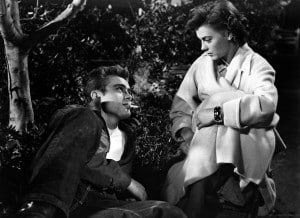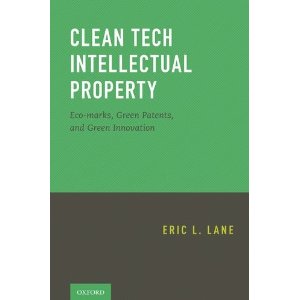In the never-ending battle for truth, justice and invalidating methods on natural phenomenon, the U.S. Court of Appeals for the Federal Circuit has once again taken up the burden to review the case of Classen Immunotherapies, Inc. v. Biogen IDEC (06-1634, -1649), after the Supreme Court vacated the CAFC’s earlier decision in view of the Court’s decision in Bilski v. Kappos.
This case, seemingly a do-over of the Metabolite case, involves patents claims directed to methods of selecting vaccine regimens by comparing two regimens and identifying the regimen less likely to cause chronic autoimmune disorders. The district court held that the claims were invalid as an attempt to patent the idea of a correlation between vaccine schedules and immune mediated disorders (natural phenomenon).
In Classen, the Federal Circuit affirmed the denial of patent-eligibility of a medical treatment method under 35 USC § 101, that is, a question of whether the claimed invention meet the requirements for patentable subject matter.
The entire opinion is as follows:
“In light of our decision in In re Bilski, 545 F.3d 943 (Fed. Cir. 2008) (en banc), we affirm the district court’s grant of summary judgment that these claims are invalid under 35 U.S.C. § 101. Dr. Classen’s claims are neither “tied to a particular machine or apparatus” nor do they ‘transform[] a particular article into a different state or thing.’ Bilski, 545 F.3d at 954. Therefore we affirm.”
On petition for a writ of certiorari, the Supreme Court vacated and remanded for further consideration in light of Bilski v. Kappos. Classen Immunotherapies, Inc. v. Biogen IDEC et al. (08-1509).
While the original CAFC opinion was just sixty-eight words, the current revisit brought out three opinions totaling fifty-seven pages, including a concurring opinion by the Chief Judge Rader, joined by Newman, as well as a dissent by Moore.
In looking at the district court’s application of the common-law exclusions from §101 of “laws of nature, natural phenomena, and abstract ideas” under Diamond v. Diehr, the CAFC then tried to answer the question of eligibility with guidance from Bilski that “[r]ather than adopting categorical rules that might have wide-ranging and unforeseen impacts,” exclusions from patent-eligibility should be considered in view of the particular case and applied narrowly.
On remand, the Court that the claimed subject matter of two of the three Classen patents is eligible under §101 to be considered for patenting, although recognizing that the claims may not meet the substantive criteria of patentability as set forth in §102, §103, and §112 of Title 35.
The case involves three related patents, each entitled “Method and Composition for an Early Vaccine to Protect Against Both Common Infectious Diseases and Chronic Immune Mediated Disorders or their Sequelae”: US Pat. Nos. 6,638,739; 6,420,139 and 5,723,283.
The patented method of the ’139 and ’739 patents is exemplified by Claim 1 of the ’739 patent. Claim 1 states:
1. A method of immunizing a mammalian subject which comprises:
(I) screening a plurality of immunization schedules, by
(a) identifying a first group of mammals and at least a second group of mammals, said mammals being of the same species, the first group of mammals having been immunized with one or more doses of one or more infectious disease-causing organism-associated immunogens according to a first screened immunization schedule, and the second group of mammals having been immunized with one or more doses of one or more infectious disease-causing organism-associated immunogens according to a second screened immunization schedule, each group of mammals having been immunized according to a different immunization schedule, and
(b) comparing the effectiveness of said first and second screened immunization schedules in protecting against or inducing a chronic immune-mediated disorder in said first and second groups, as a result of which one of said screened immunization schedules may be identified as a lower risk screened immunization schedule and the other of said screened schedules as a higher risk screened immunization schedule with regard to the risk of developing said chronic immune mediated disorder(s),
(II) immunizing said subject according to a subject immunization schedule, according to which at least one of said infectious disease-causing organism-associated immunogens of said lower risk schedule is administered in accordance with said lower risk screened immunization schedule, which administration is associated with a lower risk of development of said chronic immune-mediated disorder(s) than when said immunogen was administered according to said higher risk screened immunization schedule.
The §101 Threshold
§101. Whoever invents or discovers any new and useful process, machine, manufacture, or composition of matter, or any new and useful improvement thereof, may obtain a patent therefor, subject to the conditions and requirements of this title.
In Le Roy v. Tatham (1852), the Court reiterated that “A principle, in the abstract, is a fundamental truth; an original cause; a motive; these cannot be patented, as no one can claim in either of them an exclusive right.”
The district court held that none of the Classen claims meets the threshold under §101 of eligibility for patenting, reasoning that the method claimed in all three patents includes the mental step of reviewing the relevant literature to determine the lower-risk immunization schedule.
However, precedent has recognized that the presence of a mental step is not of itself fatal to §101 eligibility, and that the “infinite variety” of mental and physical activity negates application of a rigid rule of ineligibility. See Application of Prater, 415 F.2d 1393, 1402 n.22 (CCPA 1969).
Classen argued that the immunization step is required so that the claims are not directed to an abstract idea like the commodity hedging method in Bilski v. Kappos. The Court in Bilski v. Kappos did not define “abstract,” and Justice Stevens observed in concurrence that “[t]he Court, in sum, never provides a satisfying account of what constitutes an unpatentable abstract idea,”
The court agreed:
The claims of the ’139 and ’739 patents are directed to a method of lowering the risk of chronic immune-mediated disorder, including the physical step of immunization on the determined schedule. These claims are directed to a specific, tangible application, as in Research Corporation, and in accordance with the guidance of Bilski v. Kappos that “[r]ather than adopting categorical rules that might have wide-ranging and unforeseen impacts,” exclusions from patent-eligibility should be applied “narrowly,” 130 S. Ct. at 3229, we conclude that the subject matter of these two patents traverses the coarse eligibility filter of §101.
…
The representative claim of the ’283 patent is directed to the single step of reviewing the effects of known immunization schedules, as shown in the relevant literature. Although recourse to existing knowledge is the first step of the scientific method, the method claimed in the ’283 patent simply invites the reader to determine the content of that knowledge. The ’283 claims do not include putting this knowledge to practical use, but are directed to the abstract principle that variation in immunization schedules may have consequences for certain diseases. … We conclude that the immunization step moves the ’139 and ’739 claims through the coarse filter of §101, while the abstraction of the ’283 claim is unrelieved by any movement from principle to application.
The dissent argued that there is “no distinction” between the claims of the ’283 patent and the claims of the ’139 and ’739 patents.
The “Safe-harbor” Provision, 35 U.S.C. §271(e)(1)
Classen claimed that Biogen and GlaxoSmithKline infringed on the ground that both companies participated in studies “to evaluate suggested associations between childhood vaccinations, particularly against hepatitis B and Haemophilus influenza . . . and risk of developing type 1 diabetes; and to determine whether timing of vaccination influences risk.” Classen also stated that Biogen induced infringement by licensing technology to GlaxoSmithKline and “providing instructions and/or recommendations on a proper immunization schedule for vaccines.” The district court granted summary judgment that these activities are within the safe-harbor provision of the Hatch-Waxman Act:
§271(e)(1). It shall not be an act of infringement to make, use, offer to sell, or sell within the United States . . . a patented invention . . . solely for uses reasonably related to the development and submission of information under a Federal law which regulates the manufacture, use, or sale of drugs or veterinary biological products.
Classen argued that the district court erred in its application of §271(e)(1). Classen states that this statute, as enacted and intended, and as judicially interpreted, is limited to activities conducted to obtain pre-marketing approval of generic counterparts of patented inventions, before patent expiration.
GlaxoSmithKline and Biogen countered that their reporting of vaccine relationships, or recommendations in view of the relevant literature, or other activity in conformity with FDA regulations, are within the infringement safe-harbor of §271(e)(1).
The CAFC sided with Classen on this point:
§271(e)(1) provides an exception to the law of infringement in order to expedite development of information for regulatory approval of generic counterparts of patented products. The statute does not apply to information that may be routinely reported to the FDA, long after marketing approval has been obtained.
Section 271(e)(1) arose in the Drug Price Competition and Patent Term Restoration Act of 1984 (“Hatch-Waxman Act”), 98 Stat. 1585. The House Report explains that the Act “provides that it is not an act of patent infringement for a generic drug maker to import or to test a patented drug in preparation for seeking FDA approval if marketing of the drug would occur after expiration of the patent.”
This purpose was emphasized throughout the legislative process: “The purpose of sections 271(e)(1) and (2) is to establish that experimentation with a patented drug product, when the purpose is to prepare for commercial activity which will begin after a valid patent expires, is not a patent infringement.” Id. Again in Part 2 of H.R. Rep. No. 98-857, at 8 (1984), the Report is explicit that “the only activity which will be permitted by the bill is a limited amount of testing so that generic manufacturers can establish the bioequivalency of a generic substitute.” The Report states that “the generic manufacturer is not permitted to market the patented drug during the life of the patent; all that the generic can do is test the drug for purposes of submitting data to the FDA for approval.” Id. at 30. The activities of which Biogen and GlaxoSmithKline are accused by Classen cannot be stretched into this role.
In Merck KGaA v. Integra Lifesciences I, the Court said that “§271(e)(1) leaves adequate space for experimentation and failure on the road to regulatory approval . . . .” The Court held that preclinical research, whether or not ultimately included in a submission to the Food and Drug Administration, is exempted from infringement by §271(e)(1) “as long as there is a reasonable basis for believing that the experiments will produce ‘the types of information that are relevant to an IND [investigational new drug application] or NDA [new drug application].’” Id. at 208 (quoting Brief for United States as Amicus Curiae 23).
In contrast, the Biogen and Glaxo activities charged with infringement are not related to producing information for an IND or NDA, and are not a “phase of research” possibly leading to marketing approval. Merck v. Integra does not provide a §271(e)(1) safe harbor for these activities.





